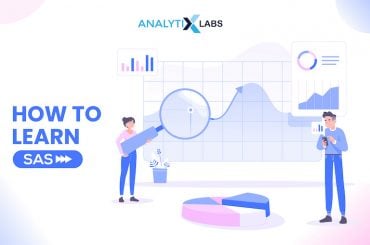 There was a time when entry to analytics meant SAS. Lately though, there have been lots of debates and conversations around the bleak future of SAS professionals with R & Python gaining grounds. Well it may seem rightly so since flexibility and scalability attributes of R & Python have made them tremendously popular in recent times. However, it will be too early an assumption atleast in the near future that SAS will be written off.
There was a time when entry to analytics meant SAS. Lately though, there have been lots of debates and conversations around the bleak future of SAS professionals with R & Python gaining grounds. Well it may seem rightly so since flexibility and scalability attributes of R & Python have made them tremendously popular in recent times. However, it will be too early an assumption atleast in the near future that SAS will be written off.
This issue may infact need a deeper analysis with respect to business environment, consumers insights or actual user insights and the very nature of the tools themselves; versus passing randomized judgments based on just the demand trends.
Business decisions in dynamic environment and role of Analytics
With analytics, data driven business decisions have become the norm. Artificial Intelligence and Internet of things are gaining momentum due to their ability to offer great insights in solving critical business issues. By enabling realtime automated decisioning system, analytics, is helping businesses mitigate risks and streamline operations in dynamic business environments. Cutting edge technology enabled modern banks, are more diligent in their customer handling through advance statistical methods and machine learning algorithms. Finally, as organisations are maturing with data so is analytics getting democratised. Data is today accessible to a larger audience and consumerisation of analytics is on the rise leading to the trend of enabling data driven decisions. Indoctrinating even non-traditional domains into analytics, has spurred the arrival of the mammoth analytics age.
No surprise then analytics industry today has 90% more jobs than any other industry or profession. Mckinsey predicts a shortfall of 1.7 million data science and big data professionals over next few years. Amidst already a huge demand vs. supply gap then why are we already talking about future of SAS professionals? This will need some understanding of the user insights which brings us to the most hot subject of – millenials – as it is estimated that more than half of the workforce is millenials.
What about millenials and analytics?
During a conversation on R versus SAS, a millennial analytics professional said “ With R, as a user, you are in control versus following rules and getting controlled with analytics softwares like SAS. R being open source is free and you are free to modify and use it. The ease of using R makes it my preferred tool.” The point he was referring to was not so much about which is a better platform rather, about the freedom an open source tool like R and Python offers. As per a 2016 Deloitte millennial study the evaluation criteria for career opportunities is intrinsically based on the idea of freedom and they value life not by the size of their paycheck but rather through quality of their life.
So then it is not surprising that we are witnessing an age of multiple opensource tools and softwares, for its ‘freedom to use’ aspect. Richard Stallman – who started the open source movement – was of the view that blocking the user’s freedom was a crime and not so much the issue of charging for the software. Then it is no surprise that today’s workforce who values freedom prefers open source platforms like R and Python which is also more easily accessible for advanced learning purposes. As per a Burtch Works survey on SAS, R and Python the results were pretty divided, with majority at 42% in favour of R in the US market. However, the most interesting conclusion was the preference of one platform over another with respect to the number of years of experience, where, the preference for SAS was highest for mature age groups with 16+ years of experience . Interestingly the preference reversed in favor of R and Python within the experience bracket of 0 to 5 years. At this point maybe analysing the nature of the tools may give some more insights to delve on.
What about actual Learning of tools?
When it comes to learning an analytical tool then three things are very critical – cost, advanced learning options and level of learning difficulty. SAS is not difficult to learn, hence, it still is considered the starting point for future analytics professionals. With university edition of SAS, accessing it for learning purpose is no longer challenging, however, for more advanced analytics learning R and Python prove to be better tools. Hence, making R & Python more preferred tools for learning in universities which, again answers for more popularity of the tools amongst the younger professionals.
Out of the three the most advanced programming skill learning capability is required for Python followed by R. Which again means that relevance of SAS still remains where someone with a non-programming capability, wanting to start his or her career in analytics today can begin with SAS . Again only knowledge of SAS will not suffice and this needs to be clubbed up with more future relevant R or Python. For a generation of hybrid skills, linear learning is a passe and hence, knowledge in more than one tool becomes essential. Realising this, traditional analytics businesses are preferring combination of two analytics tools and in most cases SAS is an essential inclusion.
How are businesses making the decision on right tools?
R & Python also score very high in comparison to SAS when it comes to cost factors, hence, making it more easily accessible. With increase of entrepreneurship through startups, both in India and globally, small to mid sized companies are erupting and they do again opt for R and Python for both the cost and advanced analytics advantage. Even large organisations are preferring a combition of two or more analytical tools mostly R or Python with SAS. This is mostly for the flexibility, scalability and risk management that R and Python provide.
All is not rosy though, R and Python are free but at a cost of no support system and no warranty. The only or the biggest solace is in their collaborative user community. Being a collaborative generation and even the business models today needing critical collaborative working environment for faster decision making, the community support is pretty much in sync with today’s work environment. With support from varied background of the community members; the community itself becomes the greatest support and ends up improving APIs via packages and libraries.
And finally the verdict – what is in future for SAS professionals?
While R & Python would have eventually surfaced with or without SAS, there, SAS can probably be considered a catalyst in the growth of advanced analytics from R & Python. Distant future no one can really predict, even for predictive statistical tools! Looking at the current trends it is difficult to say, whether one tool will exist over the other or both will co-exist in longer run. Although in the immediate near future, both SAS and opensource tools – R and Python – will co-exist; with open source tools being more popular with younger workforce for the freedom of expression, flexibility, scalability and cost advantage. Hence, for a SAS professional there is no immediate threat professionally, however, an upskilling and knowledge of either R or Python will be a good investment for a progressive career goals. In sync with the business trend of using more than one analytics tool, knowledge of another tool will add a lot of flexibility for future and open up new opportunities for SAS professionals!
Major References:
- Top 10 Analytics Trends in India to watch out for in 2017 By Analytics India Magazine & AnalytixLabs

![Learning Logistic Regression – Applications using Python [Part 2- Practical]](https://www.analytixlabs.co.in/blog/wp-content/uploads/2023/11/Learning-Logistic-Regression-370x245.jpg)






4 Comments
Thanks for sharing this information, it’s great post. Maziworld is a one of the best SAS Online tutorial web portal.
Nice Content !! thanks for the sharing !!
Nice content delivery
Good Post! Thank you so much for sharing this pretty post, it was so good to read and useful to improve my knowledge as updated one, keep blogging.